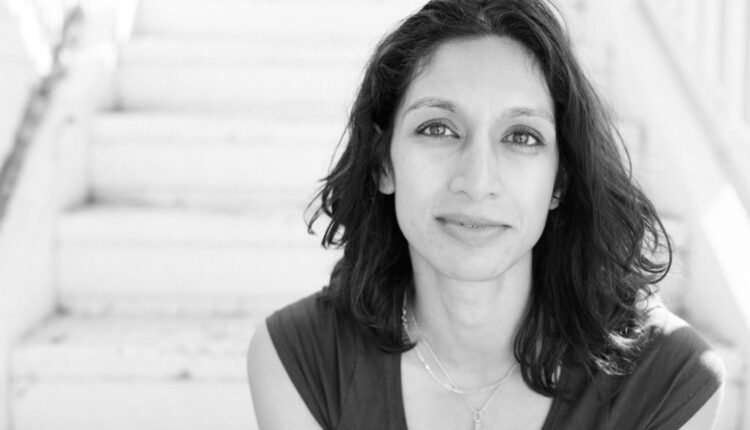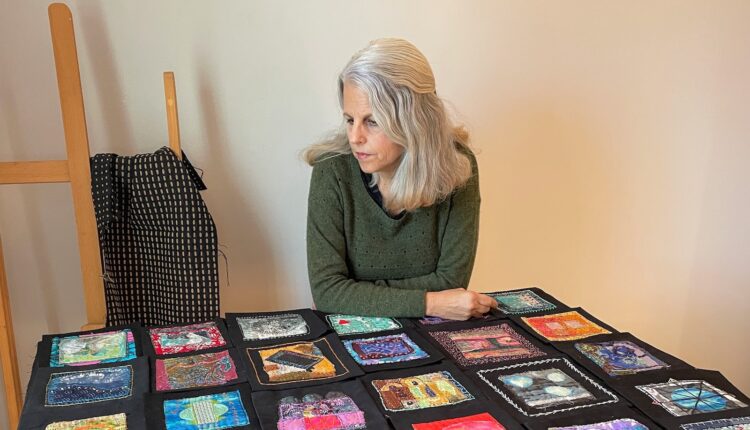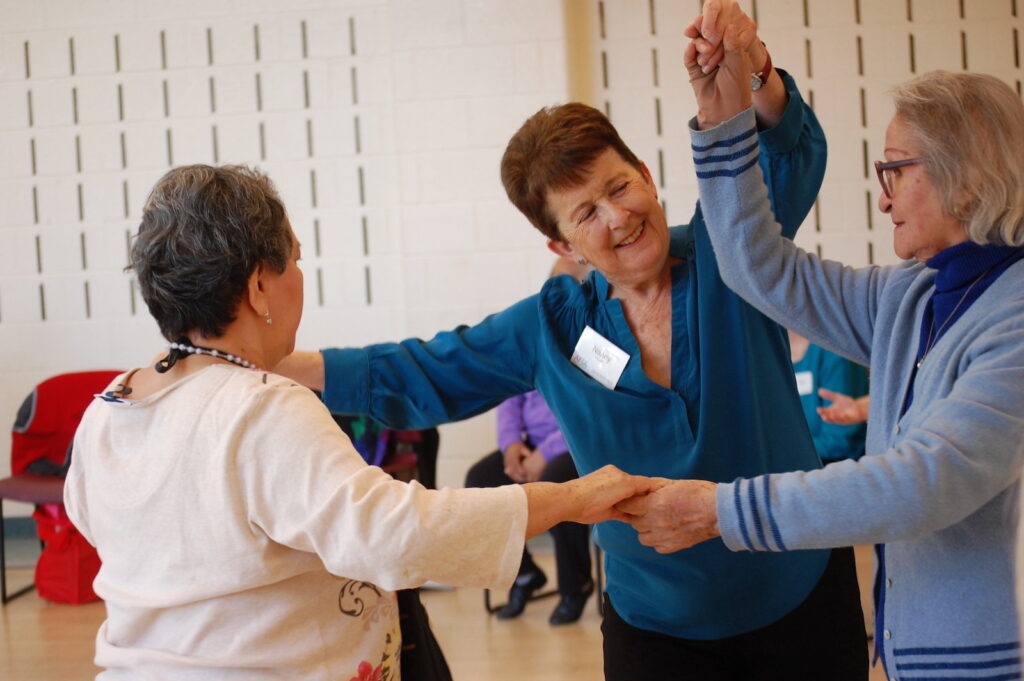By Dylan Klempner
This article was first published in The DC Line here.
What does gentrification feel like?
The answer is complex, it’s safe to say. Perspective matters. If you have been displaced or if the neighborhood you grew up in is no longer recognizable, maybe you feel anger and resentment. If you are a developer who made a profit from condominiums you sold, maybe you feel satisfied. If you’ve cashed out the equity in your home after seeing the area you used to consider run-down and crime-ridden become vibrant and safer, maybe you feel some mix of relief and pride — or if you’ve stayed, maybe you feel annoyed by the new residents who don’t bother to say “hi” when they pass you on the sidewalk. If you just moved into a gentrified area, maybe you feel fulfilled in having found a hip neighborhood with all the amenities you wanted.
These and other complicated emotions are expressed in Shaw, LeDroit Park & Bloomingdale in Washington, D.C.: An Oral History by Shilpi Malinowski. Published last October, her book examines what it feels like to live in a gentrified community. Malinowski, who lives in the area she writes about, focuses on the thoughts and feelings of 13 neighbors, blending their narratives with her own. A reflective narrator and effective interviewer, she gets her neighbors to open up about their closely held reactions, emotions and beliefs. Together, the 14 of them consider gentrification’s impact by discussing a wide range of topics including displacement, crime, public education and politics.
In 2011, Malinowski and her husband bought a four-bedroom home that had been divided into two two-bedroom units. It was their first experience as homebuyers. As a condition of the sale, the prior owner — who also rented out several other properties in the neighborhood — stipulated that her downstairs tenant, a single mother, would not be evicted. The couple agreed to the terms, and the tenant remained until 2018.
But another tenant — also a single mother — lived in the unit that the author and her husband eventually occupied. She was displaced. “I am still unsure of how I feel about that series of events,” writes Malinowski. She now understands that a key part of gentrification-related displacement occurs when owners sell their houses and evict their tenants. But she didn’t realize that at the time. The memory prompts a sequence of soul-searching questions: “Were we forgiven because we had at least maintained one unit of affordable rental housing in the neighborhood? Who was responsible? What would have been the most just series of events?”
She is still trying to answer these questions, she writes, allowing that their decision to move to the Bloomingdale neighborhood was based on feelings of excitement about the area’s advantages. “We moved into a thumping neighborhood.” She lists its highlights, including the Sunday farmers market, busy sidewalks and Big Bear Cafe.
Gentrification’s most devastating impacts are experienced by those least capable to deal with them, yet the thoughts and feelings of the displaced are largely missing from Malinowski’s book. It feels like an oversight. Did the author attempt to interview the single mother she and her husband displaced? Would hearing her voice now have helped the author answer her questions and deepen her understanding of her place in the neighborhood and her role in the gentrification process?
Greg Mason’s story of partial displacement provides the book’s best opportunity to portray the feelings associated with what Malinowski refers to as gentrification displacement. Mason, who is Black, was born in Shaw in 1956 and lived in the neighborhood for 50 years. He reminisces about its “family atmosphere,” when crime was low and he and the other children got 5-cent ice cream cones from Mr. Palmer’s and were offered free bags of day-old cupcakes and pies from the Wonder Bread Bakery on Georgia Avenue NW. In 2000, after experiencing a series of losses, including the deaths of his brother, father and mother, Mason received support from his neighbors — including the local drug dealers: “Everybody surrounded me. Everybody came together, you know. ‘We got to look out for Mason.’”
But members of Mason’s family fought him in court for ownership of his home. After a five-year battle, Mason lost the property. “I didn’t have the money to buy them out,” he tells Malinowski. He lived in his SUV for a year. Now he lives “a few blocks east of his childhood home” while maintaining a constant presence in the neighborhood. Owing, it seems, to Mason’s fortitude and deeply held commitment to the property, subsequent owners of the house have allowed him to take care of the rose bushes his mother planted 70 years earlier. “When I come in here and work on the rose bushes, I’m at peace,” says Mason.
Nick Grube and Christina Papanicolaou, who are white, currently own Mason’s childhood home, which they purchased in 2020 for $1.3 million. Malinowski writes that they have “a relationship with Mason and complex feelings about how they ended up in that home and what their responsibilities are.” Papanicolaou says that she and her husband are “hyperaware” that they are gentrifiers. As a result, she feels “self-conscious” as well as a sense of “guilt.” She says “gentrification is a lot like colonization.” After taking land and resources from local inhabitants, “you are depleting the culture of what was originally here.” Her solutions: “Be respectful to the people that live here and that are originally from here.” Grube, her husband, says growing up in Hawaii taught him about being respectful. Those who are oblivious to their surroundings are disrespectful, he says. “You’re using the place rather than being a part of it. You’re extracting.” Papanicolaou wants to do more for the community but comes across as overwhelmed and dissatisfied with the options she is aware of. “How can we give back in some kind of way — or at least shop with local businesses? And I don’t know, support local music or culture? I don’t know. Do we give mutual aid donations? I don’t know.”
In a recurring topic throughout the book, Malinowski and her neighbors seek to understand diversity and integration in their community through discussions about their children’s education. The author writes that the diversity of her children’s school, Seaton Elementary, was a “huge plus.” Her husband is white, and she describes herself as a “relatively privileged South Asian American” used to navigating majority-white spaces as a racial minority. At the same time, with her parents having immigrated to the United States, she “feels huge amounts of tenderness, empathy and similarity with immigrants who are putting their kids in the public school system as a path to success.”
Public education also appears to reveal the extent to which the community really is integrated. Seaton has racial and language diversity, and it is designated as Title 1, meaning more than 40% of the students are from low-income families. For most of the parents, there was more integration in the school than they had ever experienced, she writes. Yet the parents themselves tended to self-segregate: “People of the same race often clustered together.”
Using a more scientific approach, Derek Hyra’s 2017 book Race, Class and Politics in the Cappuccino City reveals that beyond reduced instances of crime, few advantages ever reach low-income people who stay in gentrified areas. Hyra, an American University professor and founding director of its Metropolitan Policy Center, spoke with 60 residents and community stakeholders in the Shaw/U Street neighborhood between 2009 and 2014. He found that longtime residents often lose political positions and cultural roles, and they tend to feel they’ve lost their community. “Few deep, meaningful interactions occur across racial and income divisions,” writes Hyra, who is white. He calls the phenomenon “micro-segregation.”
Particularly given the geographic overlap, it’s a bit surprising that Malinowski doesn’t mention Hyra’s work.
In Malinowski’s book, her African American neighbors describe their thoughts and feelings about diversity and integration. Longtime residents such as Leroy Thorpe and Michelle Carthen offer varied reactions to the changes they’ve experienced, including a sense of lost culture and political power.
Thorpe served as an advisory neighborhood commissioner from 1986 to 2006, and a key tenet of his tenure was fulfilling his pledge to rid the area of open-air drug markets and crack houses. “And I did,” he says. As an ANC commissioner, he fought for the interests of the neighborhood’s Black residents. He grilled businesses that appeared before the neighborhood commission: “Are you going to provide jobs for the people?” Thorpe saw gentrification coming. One signal: As white people moved into the neighborhood, his share of the vote in ANC elections decreased. Mindful of the changes ahead and the likelihood of displacement, he bought a house in the neighborhood in 1998 and encouraged other Black people to do the same. “Property values are going to go up; you better get a house right now,” he told them.
Thorpe told Malinowski that he sometimes feels out of place in his own neighborhood. White people often try to control the economics, politics and education of an area, he says. “I feel that the White folks around here look at me like, ‘What are you doing here?’” They don’t realize that the neighborhood is safer because of his work in shutting down the crack houses and open-air drug markets. Thorpe decries other unwelcome changes that came with gentrification. Black people lost their culture, he says. “There are no clubs.” The places where Black kids played are now dog parks. He also sees a segregated DC. White and Black people don’t hang out, he says, unless they are “high society, when these people are the head of a company or a politician, but there is no socialization.”
Carthen, who attended a local elementary school in the 1970s, says her oldest son was born during the city’s crack epidemic. In parenting her two boys, Carthen says she had “five pillars: I wanted them to get out of the city alive, drug-free, baby-free, disease-free and record-free.” Both of her sons went to college on scholarships. “It was hard because, in order to do that, you have to give up yourself — you have to give up your life.” Today, her boys, who grew up in the neighborhood, feel as though people look at them as if they don’t belong when they come to see her. While she says she is glad she stayed, she has mixed feelings about the neighborhood: “It doesn’t feel like a community anymore. It just feels like a place where we live.”
Of all the people Malinowski interviewed, Gretchen Wharton has lived in this part of the District the longest. Born in 1946, she has called the neighborhood home ever since. Now retired, she is a member of the DC Commission on the Arts and Humanities and chairs the board of directors for Shaw Main Streets, a nonprofit whose mission is to revitalize business corridors in Shaw. She welcomes some of the changes that have occurred over the past 15 years, including seeing people feeling safe enough to walk the streets. “Community is what makes you feel good about where you live and what makes you want to stay there and make it grow,” she says. But she also sees evidence of DC’s racial divide: “The decision making/power play role has always been at the behest of Caucasians.”
Creating more equitable and just outcomes for longtime residents in gentrifying areas requires intentional policies that protect their ability to stay and thrive for years to come, according to Hyra. In his book, he recommends that communities preserve affordable housing and small businesses while also helping low- and moderate-income residents obtain living-wage jobs and retain positions in local governance. He further proposes that neighborhoods establish “third spaces” — places where people of mixed incomes can come together for shared activities.
Through listening and recording her neighbors’ thoughts and feelings, Malinowski has created a literary “third space” of sorts. She writes of her hope that readers will “feel liberated to come up with their own understanding of life in our gentrified neighborhood.” Her volume of candid oral histories and personal narrative offers an opportunity for reflection and invites readers to consider their own views of gentrification, whether or not they live in Bloomingdale, LeDroit Park and Shaw.
Shaw, LeDroit Park & Bloomingdale in Washington, D.C.: An Oral History by Shilpi Malinowski (160 pages, $21.99) was published in October 2021 by The History Press as part of its American Heritage series.
This article was produced in conjunction with Day Eight’s February 2022 conference on “The Crisis in Book Review.” The DC Line worked with conference organizers on the New Book Reviewer Project, an initiative to grow the cohort of qualified local book reviewers. Dylan Klempner is one of eight writers assigned as part of the conference to write a review for The DC Line or the Washington Independent Review of Books.




